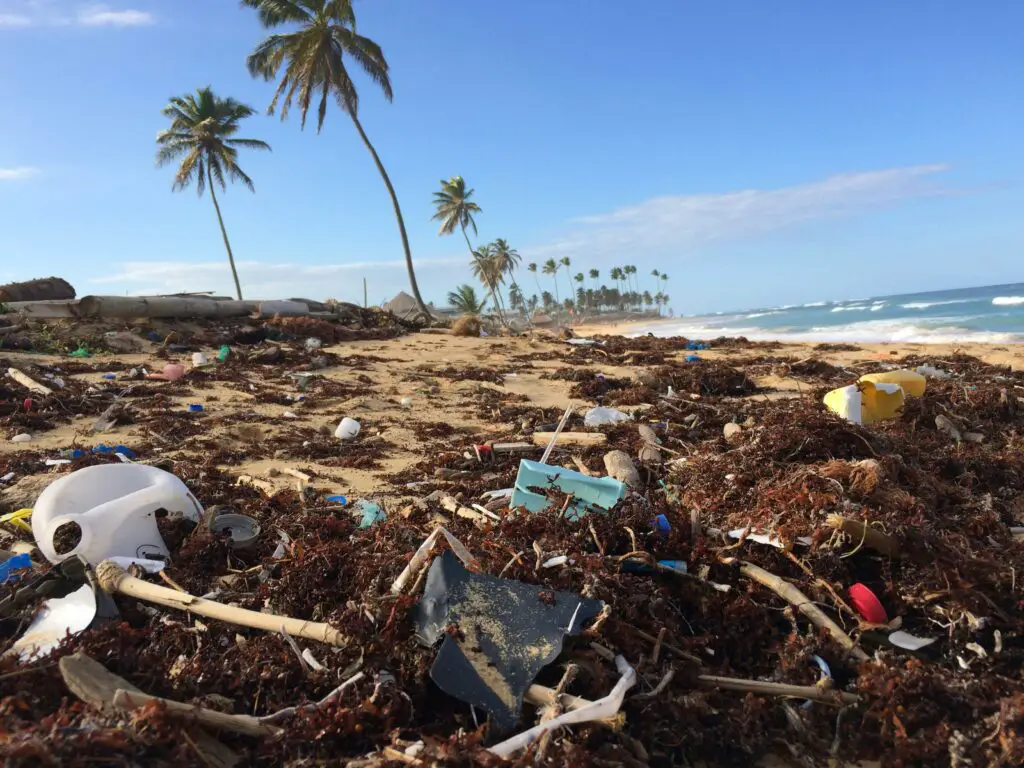Soil Pollution: Causes, Effects, and Solutions
What is soil pollution / land pollution
Introduction
Soil pollution occurs when harmful substances, such as chemicals and waste, contaminate the soil, making it unsafe for plants, animals, and humans. Soil is a energetic resource that supports life on Earth. It provides nutrients for plants, which in turn feed animals and people. Strong soil is essential for agriculture, water filtration, and maintaining ecosystems. When soil becomes polluted, it can lead to serious environmental and health problems. Understanding soil pollution, its causes, effects, and solutions is key for protecting our planet and ensuring a well future.

Causes of Soil Pollution
- Industrial Waste and Chemicals: Factories and industrial plants often produce waste that can contaminate the soil. This waste may include heavy metals, toxic chemicals, and hazardous materials. When these materials are not properly managed, they can leak into the soil and cause long-term pollution. For example, in areas with removal activities, heavy metals like lead and mercury can collect in the soil, making it toxic for plants and animals.
- Agricultural Practices: Agriculture is a significant source of soil pollution, mainly due to the unnecessary use of fertilizers, pesticides, and herbicides. These chemicals are applied to crops to enhance growth and protect them from pests, but they can also injury the soil. Over time, the collection of these chemicals can reduce soil fertility and lead to the contamination of nearby water sources. For case, the general use of chemical fertilizers in India has led to the degradation of soil quality in many farming regions.
- Improper Disposal of Waste: Improper waste disposal, including the removal of domestic garbage, industrial waste, and electronic waste, can contribute to soil pollution. Landfills are often filled with materials that take a long time to decompose, such as plastics and batteries. As these materials break down, they release toxic substances into the soil. In many developing countries, the lack of proper waste management systems has led to general soil contamination.
- Mining Activities: Mining for minerals, coal, and other resources can cause significant soil pollution. The process of mining minerals from the earth often involves the use of chemicals that can leak into the soil. Also, mining activities can disturb the natural structure of the soil, leading to loss and loss of fertility. A well-known example is the contamination of soil in the mining areas of Africa, where the extraction of valuable metals has led to severe environmental degradation.
- Urbanization and Construction: As cities increase and more land is developed for housing, roads, and infrastructure, the risk of soil pollution increases. Construction activities often include the use of materials like cement, paint, and asphalt, which can contaminate the soil. Urban areas also generate large amounts of waste, which, if not managed properly, can contribute to soil pollution. For example, the rapid urbanization in many parts of Asia has resulted in the loss of fertile agricultural land and increased soil contamination.

Effects of Soil Pollution
- Impact on Human Health: Soil pollution positions serious risks to human health. Contaminated soil can lead to the growth of toxic substances in the food chain. For example, crops grown in polluted soil can absorb heavy metals like lead and arsenic, which can then be consumed by humans. Long-term exposure to these substances can cause health problems such as cancer, neurological disorders, and reproductive issues. In regions with high levels of soil pollution, residents may suffer from increased rates of illness.

- Damage to Plant Life and Agriculture: Soil pollution can harm plants and reduce agricultural productivity. Polluted soil may lack essential nutrients, making it difficult for plants to grow. Crops grown in contaminated soil may have lower produces and reduced quality. In some cases, soil pollution can lead to the complete loss of agricultural land, forcing farmers to license their fields. This can have shocking effects on food security, especially in regions that rely heavily on agriculture.
- Contamination of Water Sources: Pollutants in the soil can leak into groundwater and nearby water bodies, leading to water pollution. This can affect the quality of drinking water and harm aquatic life. For example, the use of pesticides and fertilizers in agriculture has been linked to the contamination of rivers and lakes in many parts of the world. This not only impacts the availability of clean water but also upsets ecosystems that depend on these water sources.
- Loss of Soil Fertility: Soil pollution can degrade the quality of the soil, reducing its fertility and ability to support plant life. Over time, the accumulation of harmful substances can alter the physical and chemical properties of the soil, making it less productive. This can lead to desertification, where once fertile land becomes barren and unable to support crops. In regions affected by soil pollution, farmers may struggle to maintain their livelihoods, leading to economic lacks.
- Effects on Wildlife and Ecosystems: Soil pollution can have far-success effects on wildlife and ecosystems. Contaminated soil can harm plants, which are the foundation of most ecosystems. As plant life declines, animals that depend on these plants for food and habitat may also suffer. Additionally, soil pollution can disrupt the balance of ecosystems by introducing toxic substances that affect the health and reproduction of wildlife. For example, in areas with heavy pesticide use, populations of insects, birds, and other animals have declined, important to the disruption of natural food chains.

Case Study: Soil Pollution in China
China has faced significant challenges with soil pollution, particularly in its industrial and agricultural regions. Rapid industrialization and urbanization have led to general contamination of the soil with heavy metals, chemicals, and waste. In some areas, soil pollution has reached disturbing levels, affecting agriculture and public health.
One notable example is the contamination of woodland with cadmium, a toxic heavy metal. In 2013, it was revealed that rice grown in several regions of China contained high levels of cadmium, leading to widespread concern about food safety. The source of the contamination was traced back to industrial activities, including mining and metal processing.
The Chinese government has implemented several measures to address soil pollution, including severer regulations on industrial waste disposal and efforts to clean up dirty land. However, the issue remains a significant challenge, and ongoing efforts are needed to protect soil health and confirm food safety.
Solutions to Soil Pollution
- Proper Waste Management: One of the most effective ways to combat soil pollution is through proper waste management. This includes the safe disposal of industrial waste, domestic garbage, and electronic waste. Recycling and reducing the use of hazardous materials can also help stop soil contamination.
- Sustainable Farming Practices: Farmers can accept sustainable practices to reduce soil pollution. This includes using organic fertilizers, reducing the use of chemical pesticides, and working crop rotation. These methods can help maintain soil fertility and reduce the risk of contamination.
- Remediation and Restoration Techniques: In areas where soil pollution has already happened, redress techniques can be used to restore soil health. This may include removing contaminated soil, treating the soil with chemicals to deactivate pollutants, or using plants to absorb and break down harmful substances (a process known as phytoremediation).
- Reducing the Use of Harmful Chemicals: Governments and industries can work together to reduce the use of harmful chemicals that contribute to soil pollution. This may include regulating the use of pesticides and fertilizers, promoting the use of eco-friendly changes, and hopeful industries to adopt cleaner production methods.
- Public Awareness and Education: Raising awareness about the causes and effects of soil pollution is key for hopeful positive change. Educating the public about the importance of soil health and the steps they can take to stop pollution can help build a more sustainable future.

Conclusion
Soil pollution is a significant threat to our environment, health, and food security. By understanding its causes and effects, we can take action to protect our soil and ensure a better future. Everyone has a role to play, from individuals making conscious choices in their daily lives to governments and industries implementing sustainable practices. Let’s commit to protecting our soil, supporting sustainable agriculture, and advocating for policies that ensure a cleaner, better planet for future generations. Together, we can make a difference.

Great
Great concept